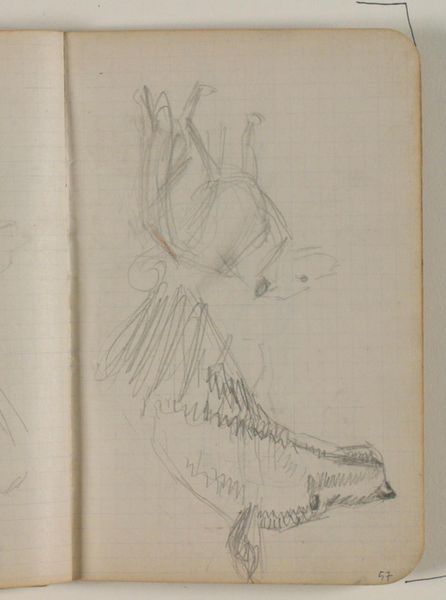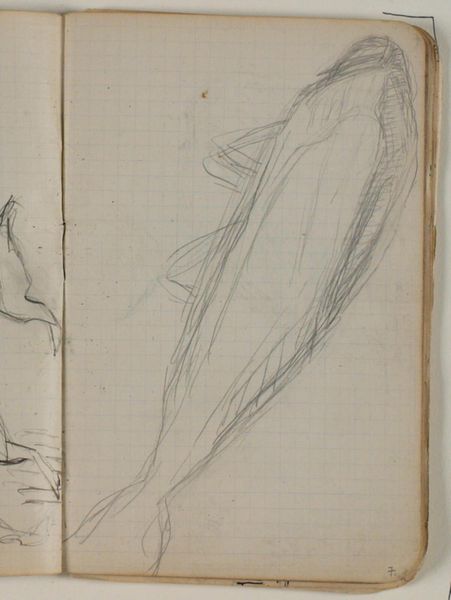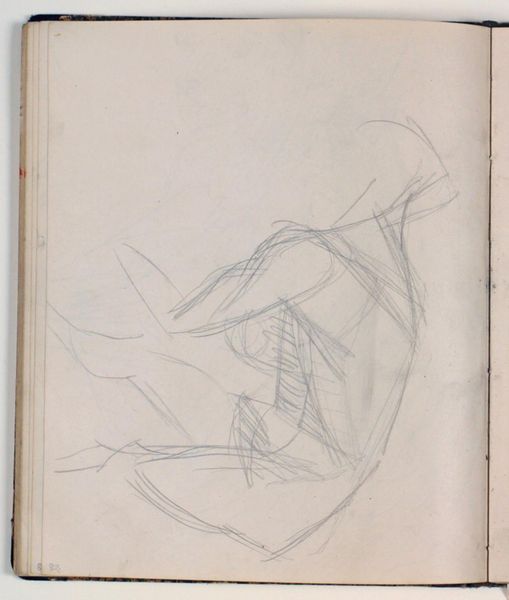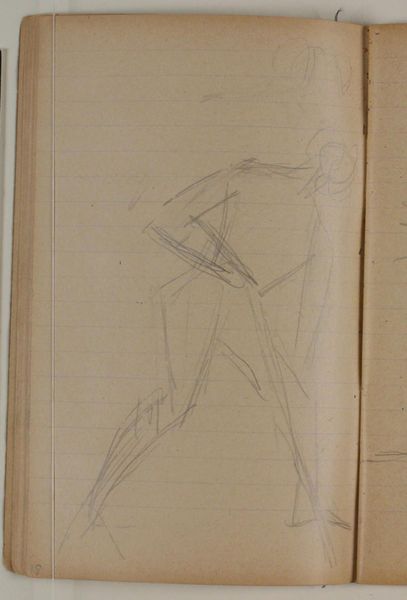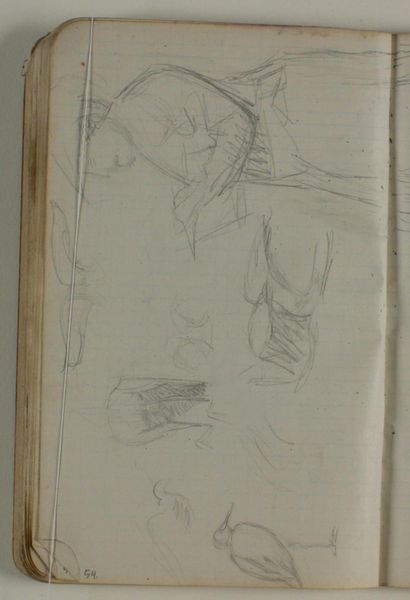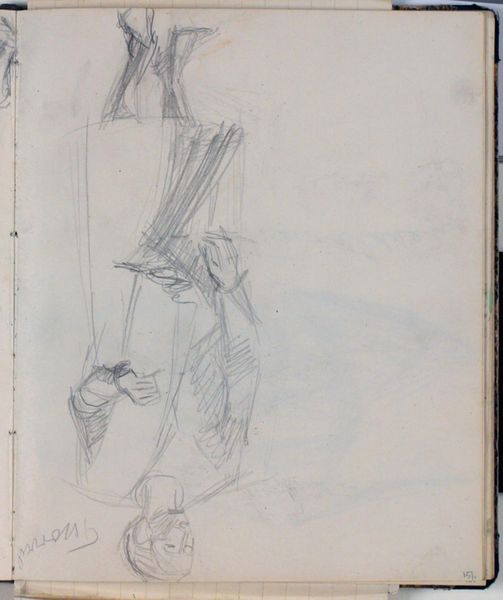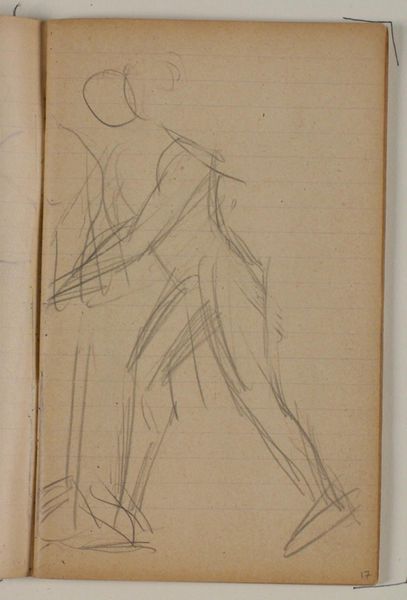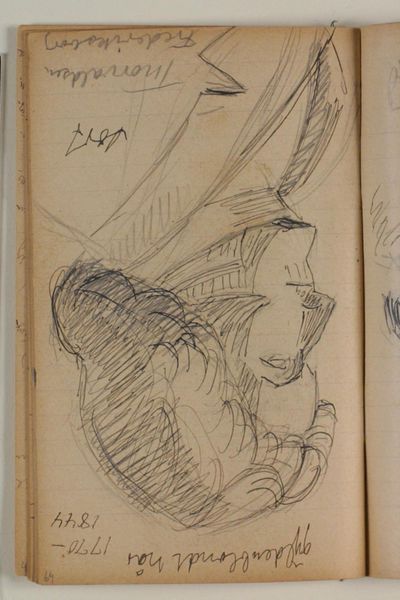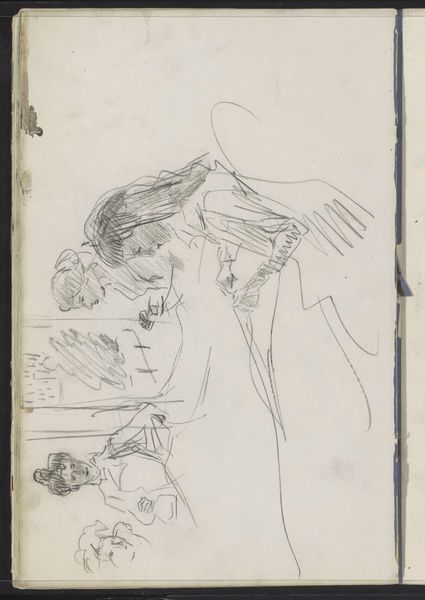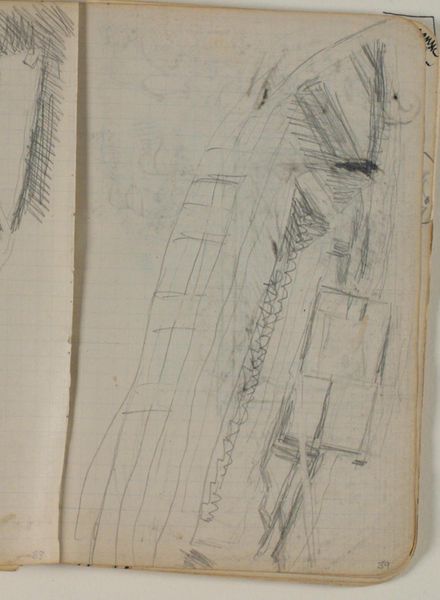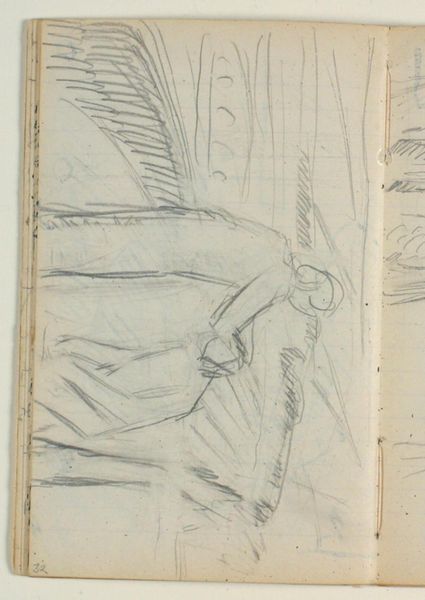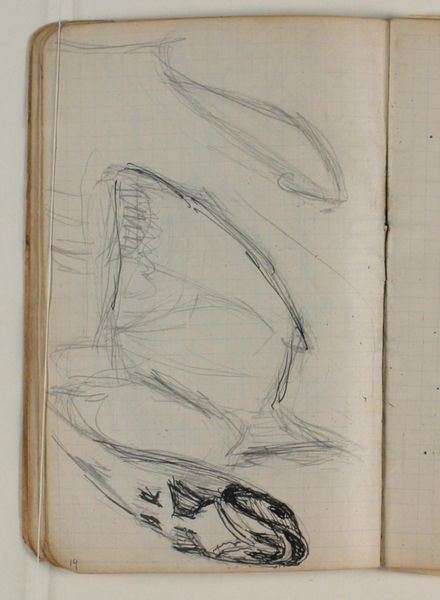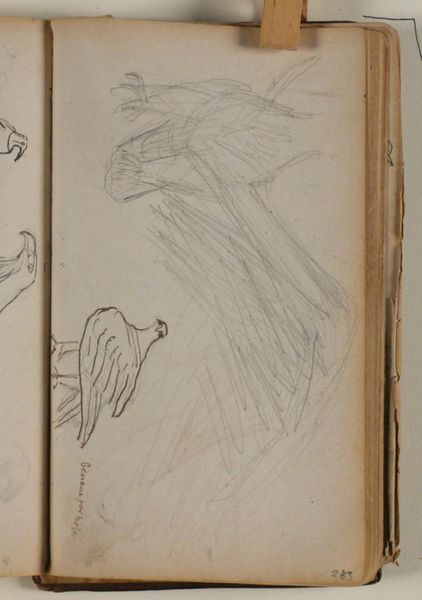
Dimensions: 169 mm (height) x 109 mm (width) x 5 mm (depth) (monteringsmaal), 169 mm (height) x 109 mm (width) (bladmaal)
Curator: Here we have Niels Larsen Stevns' "Skitser af Hunde," or "Sketches of Dogs," created between 1905 and 1907. It's a pencil drawing on paper, currently held here at the SMK, Statens Museum for Kunst. Editor: Immediately, I’m struck by the raw energy. The quick, almost frantic lines. It feels like capturing movement, like the dogs won’t sit still for a proper portrait. Curator: Precisely. Stevns was known for his impressionistic style, particularly within landscapes and figuration. You see him exploring form and movement here with minimal detail, almost as a study. These weren't meant as finished works, but rather exercises in capturing the essence of his subject. The support, simple paper, underscores this purpose. Editor: The use of pencil too speaks to that – it's an accessible material, ubiquitous even. It reduces the barrier between artist and surface. You think about the social context. Perhaps Stevns had limited resources, or perhaps the point was just capturing life directly as he found it? It is interesting to imagine Stevns on a walk, rapidly rendering sketches on site and documenting society from his subjective gaze. Curator: And beyond resources, it speaks to the role of the artist as observer. Think of the rising popularity of dog ownership during this era among the middle and upper classes and his immediate surrounding circles, which offered an opportunity for study. How do you depict them in a drawing style rooted in conveying immediacy? He has certainly decided to forego conventional standards around detailed, formal rendering practices to engage more closely with movement and presence. Editor: Right, not formal portraits, but capturing a glimpse, a fleeting moment of these dogs as companions within specific environments and networks. It’s fascinating to see the choices artists make with such common materials like paper and pencil, and how those choices are never separate from broader shifts in culture or society. It all circles back to process. What’s available, and then, how is it actually used, toward which purposes and representations. Curator: Agreed. It encourages us to think of this less as an 'artwork' and more as material evidence of artistic practice within a very specific place and moment in history. Editor: Exactly. Thanks for enriching my view of these rapid canine renderings!
Comments
No comments
Be the first to comment and join the conversation on the ultimate creative platform.
